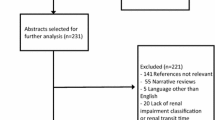Abstract
Non-nucleoside reverse transcriptase inhibitors and enfuvirtide are ineffective against HIV-2 replication. These considerations may have particular significance in the formulation of second-line or salvage regimens for HIV-2 infection when resistance or toxicity precludes the use of protease inhibitors (PIs) or specific nucleoside analogues. We describe a case of a treatment-experienced patient with important limitations in therapeutic options dictated by the presence of HIV-2 infection, severe HIV nephropathy (requiring haemodialysis), intolerance to PIs and clinical contraindications to the use of some nucleoside analogues (anaemia, pancreatic toxicity and high cardiovascular risk). A three-drug regimen based on raltegravir, tenofovir disoproxil fumarate and lamivudine was given, with no major toxicity, good immunological response and complete viral suppression.
Our case indicates that regimens based on integrase inhibitors could represent an effective alternative in PI-resistant or PI-intolerant patients with HIV-2, and that tenofovir disoproxil fumarate may be used in patients with end-stage renal disease requiring haemodialysis who cannot take other nucleoside analogues because of treatment-limiting adverse effects.

Similar content being viewed by others
References
Menéndez-Arias L, Tözsér J. HIV-1 protease inhibitors: effects on HIV-2 replication and resistance. Trends Pharmacol Sci 2008; 29: 42–9
Ren J, Bird LE, Chamberlain PP, et al. Structure of HIV-2 reverse transcriptase at 2.35-A° resolution and the mechanism of resistance to nonnucleoside inhibitors. Proc Natl Acad Sci U S A 2002; 99: 14410–5
Witvrouw M, Pannecouque C, Switzer WM, et al. Susceptibility of HIV-2, SIV and SHIV to various anti-HIV-1 compounds: implications for treatment and postexposure prophylaxis. Antivir Ther 2004; 9: 57–65
Brower ET, Bacha UM, Kawasaki Y, et al. Inhibition of HIV-2 protease by HIV-1 protease inhibitors in clinical use. Chem Biol Drug Des 2008; 71: 298–305
Ntemgwa ML, d’Aquin Toni T, Brenner BG, et al. Antiretroviral drug resistance in human immunodeficiency virus type 2. Antimicrob Agents Chemother 2009; 53: 3611–9
Grinsztejn B, Nguyen BY, Katlama C, et al. Safety and efficacy of the HIV-1 integrase inhibitor raltegravir (MK-0518) in treatment-experienced patients with multidrug-resistant virus: a phase II randomised controlled trial. Lancet 2007; 369: 1261–9
Markowitz M, Nguyen BY, Gotuzzo E, et al. Rapid and durable antiretroviral effect of the HIV-1 integrase inhibitor raltegravir as part of combination therapy in treatment-naive patients with HIV-1 infection: results of a 48-week controlled study. J Acquir Immune Defic Syndr 2007; 46: 125–33
Damond F, Lariven S, Roquebert B, et al. Virological and immunological response to HAART regimen containing integrase inhibitors in HIV-2-infected patients. AIDS 2008; 22: 665–6
Garrett N, Xu L, Smit E, et al. Raltegravir treatment response in an HIV-2 infected patient: a case report. AIDS 2008; 22: 1091–2
Izzedine H, Damond F, Brocheriou I, et al. HIV-2 infection and HIV-associated nephropathy. AIDS 2006; 20: 949–50
Bénard A, Damond F, Campa P, et al. Good response to lopinavir/ritonavir-containing antiretroviral regimens in antiretroviral-naive HIV-2-infected patients. AIDS 2008; 23: 1171–3
Roquebert B, Blum L, Collin G, et al. Selection of the Q148R integrase inhibitor resistance mutation in a failing raltegravir containing regimen. AIDS 2008; 22: 2045–6
Smith RA, Anderson DJ, Pyrak CL, et al. Antiretroviral drug resistance in HIV-2: three amino acid changes are sufficient for classwide nucleoside analogue resistance. J Infect Dis 2009; 199: 1323–6
Acknowledgements
The authors have no commercial or other associations that might pose a conflict of interest. No funding was received for this work.
Author information
Authors and Affiliations
Corresponding author
Rights and permissions
About this article
Cite this article
Francisci, D., Martinelli, L., Weimer, L.E. et al. HIV-2 Infection, End-Stage Renal Disease and Protease Inhibitor Intolerance. Clin. Drug Investig. 31, 345–349 (2011). https://doi.org/10.1007/BF03256933
Published:
Issue Date:
DOI: https://doi.org/10.1007/BF03256933




